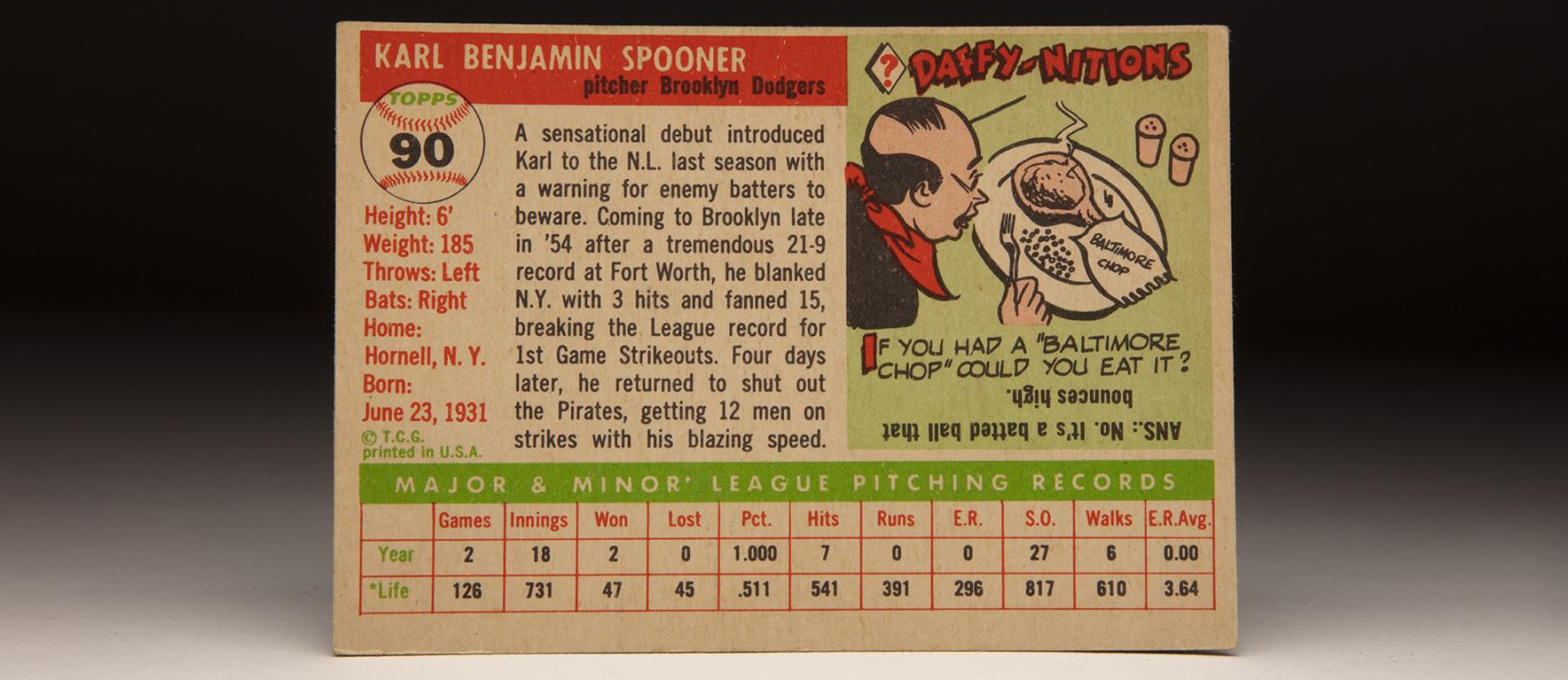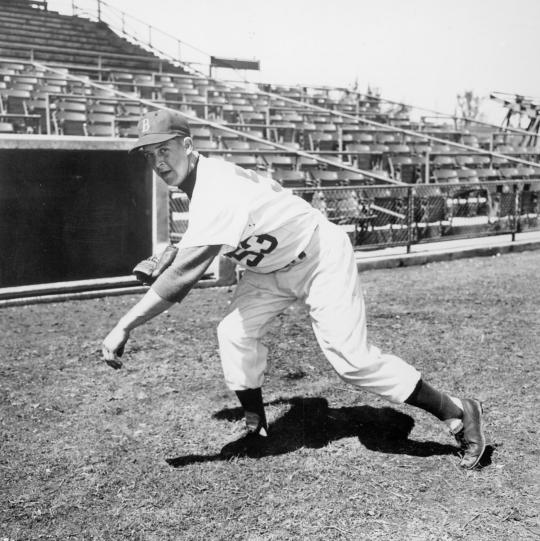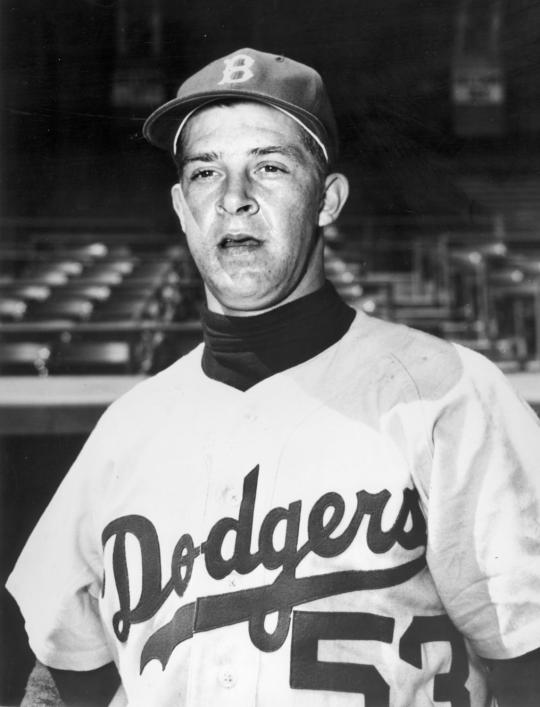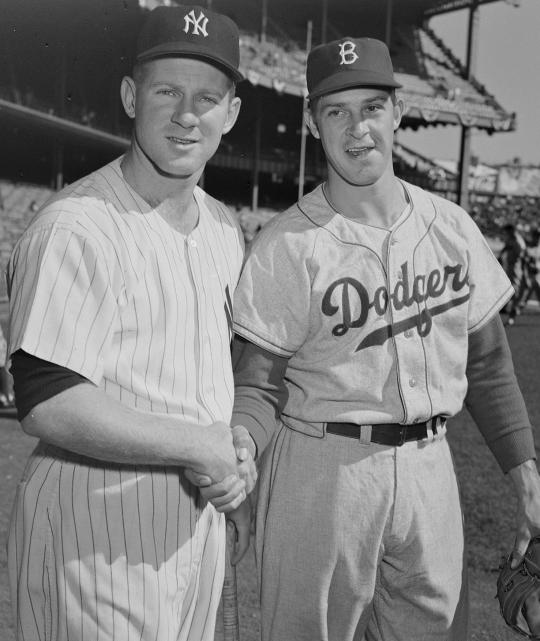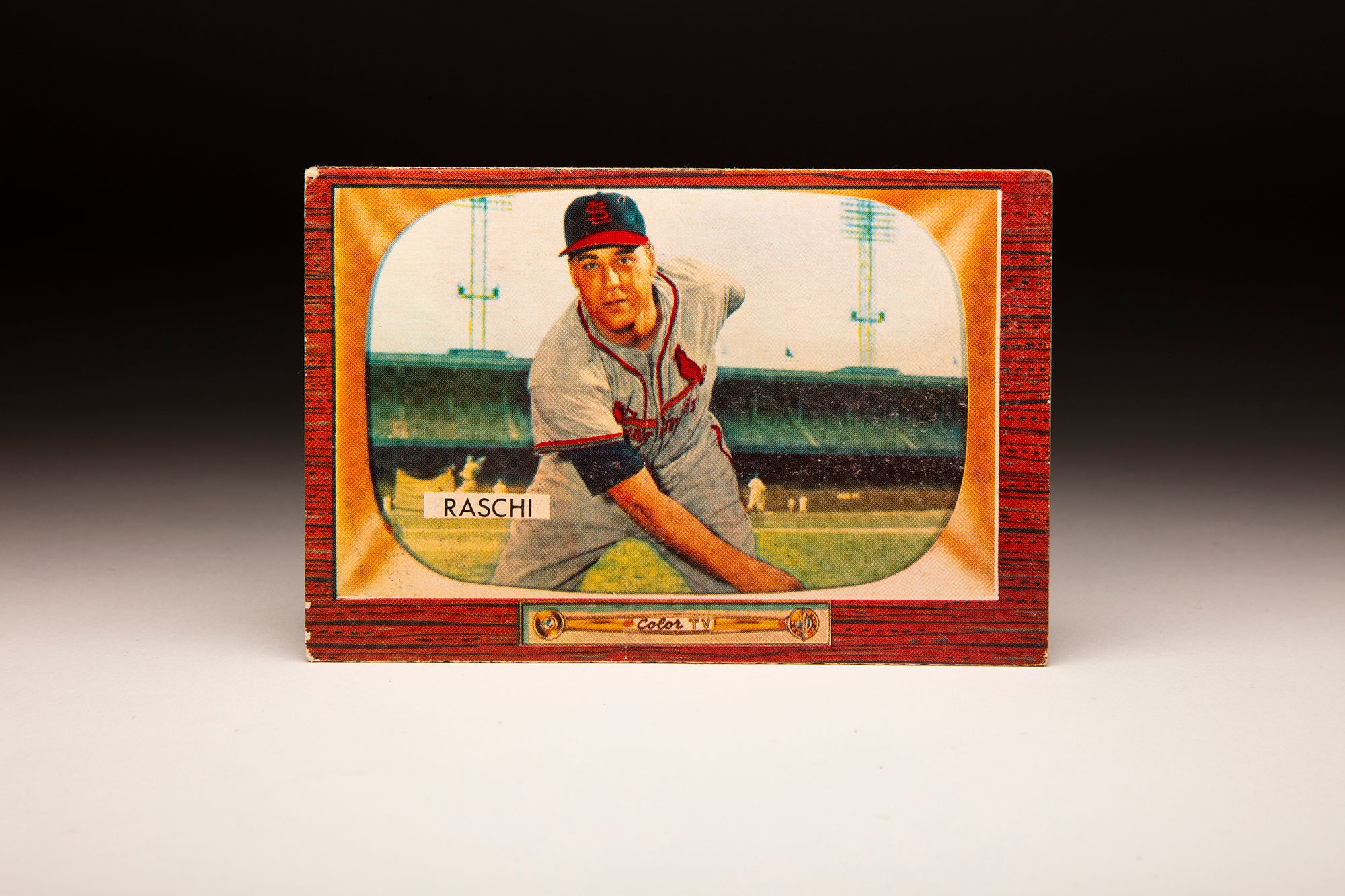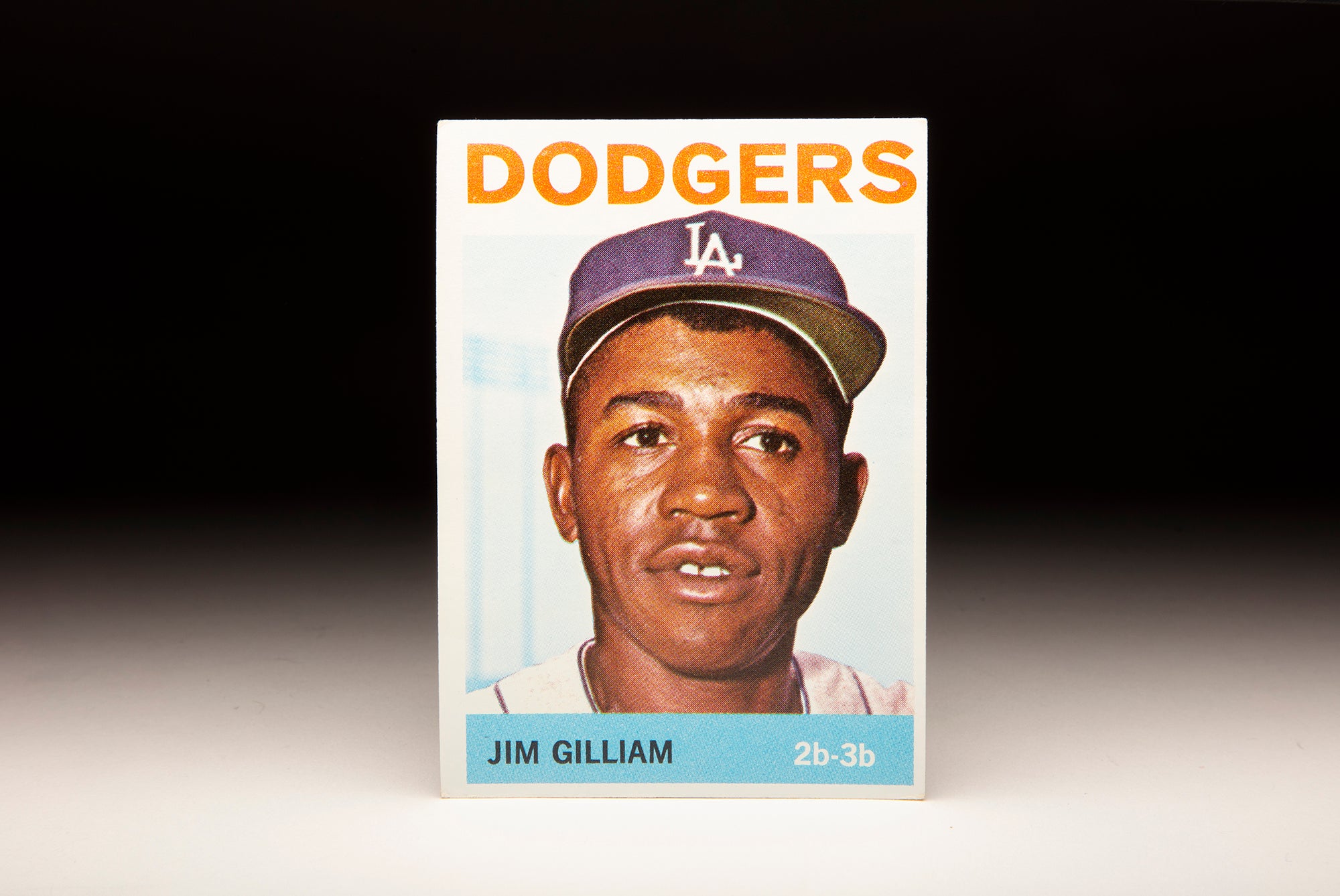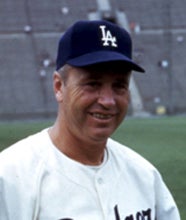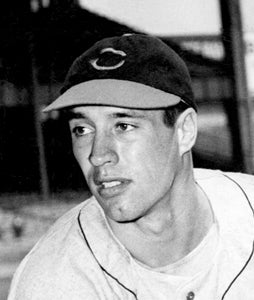- Home
- Our Stories
- #CardCorner: 1955 Topps Karl Spooner
#CardCorner: 1955 Topps Karl Spooner
Perhaps no other player in history had as quick a turn at stardom than Karl Spooner.
After just two big league starts in September of 1954, Spooner went from a virtual unknown Dodgers farmhand to a national name.
Those two complete games would represent more than 15 percent of the innings Spooner would ever pitch in the majors.
Hall of Fame Membership
There is no simpler, and more essential, way to demonstrate your support than to sign on as a Museum Member.
Spooner set a record for a big league debut with 15 strikeouts on Sept. 22, 1954, against the Giants – who had already clinched the National League pennant. He followed that with 12 strikeouts against the Pirates four days later, sending Dodgers fans into a euphoric state about the future of their rotation.
Turns out, that future did include a flame-throwing lefty – but his name was Sandy Koufax, who would sign with Brooklyn that December.
Spooner, meanwhile, became one of baseball’s great “what if” mysteries.
Born June 23, 1931, in Oriskany Falls, N.Y. – less than an hour’s drive from Cooperstown – Spooner grew up on a farm and lost both his parents and a sister before he turned 18. He made a name for himself on local town teams as a left-handed throwing catcher before moving to the mound.
Signed by the Dodgers for a $600 bonus before he even finished high school, Spooner debuted in the pros with the Class D Hornell Dodgers of the Pennsylvania-Ontario-New York League in 1951, going 10-12 with a reported 200 strikeouts over 170 innings – walking 163 batters in the process.
The Dodgers worked Spooner at three minor league stops in 1952, then he began the 1953 season with Class A Elmira, where he struggled to a 1-6 record in eight starts. The Dodgers decided a change of scenery was in order and sent Spooner to Pueblo of the Class A Western League – where his career took off.
In 21 games for Pueblo, Spooner went 11-6 with a 2.53 ERA. He set a new league record with 18 strikeouts in a game against Wichita and led the league with 198 Ks.
After impressing the Dodgers’ front office during Spring Training of 1954, Spooner was sent to Double-A Fort Worth, where he was the star of a team that – unusual for Dodger standards of the time – featured only a handful of future big leaguers, the most prominent of which was catcher Norm Sherry, who appeared in just five games.
Spooner went 21-9 over 238 innings, striking out 262 batters despite missing more than a month with a knee injury. Most observers believed the best fastballs in the Texas League in 1954 belonged to Spooner and another future big leaguer, Ryne Duren.
Called up to Brooklyn in September, Spooner made his debut on Sept. 22 when Billy Loes was unable to make his scheduled start. The Giants pulled many of their regulars during the game, but Spooner nonetheless allowed just three hits while facing Willie Mays twice and Monte Irvin three times.
“He throws harder than anybody in the league,” Dodgers catcher Roy Campanella raved to the Associated Press following the game, which ended in a 3-0 Brooklyn victory in front of 3,256 fans at Ebbets Field.
Spooner, however, seemed unfazed by the attention despite setting a record – one that still stands, having been only tied once (by J.R. Richard in his Astros debut in 1971) in the years since.
“I wasn’t nervous in the first inning,” said Spooner, who allowed two walks and a single in the frame before allowing just four base runners the rest of the way. “I was just missing the plate.”
Dodgers manager Walter Alston quickly penciled in Spooner for another start.
“This should give him confidence,” Alston said of Spooner after his debut. “On second thought, maybe he doesn’t need any more confidence.”
On Sept. 26, Spooner fanned 12 Pirates in another shutout as the Dodgers won 1-0. Spooner’s 27 strikeouts in consecutive games were one short of the then-big league record held by Bob Feller.
Following the season, Spooner quickly agreed to a $7,500 deal for 1955 with the Dodgers and underwent knee surgery to remove loose cartilage.
“Walter (Alston) assures me that the starting pitcher (Spooner) is on our club,” Dodgers general manager Buzzie Bavasi told the Brooklyn Daily Eagle while speculating what the team’s 1955 roster would look like.
Spooner, meanwhile, was already looking forward to the new season.
“It won’t be like (his first two starts) all the time, of course,” Spooner told the Daily Eagle. “But I expect to win as many games as the next guy.
“Those (his first two starts) were my days, naturally, but I might start off the same way next season.”
During the offseason, Spooner made headlines around the country when he was named the king of the Old Forge (N.Y) Winter Carnival, an event in a tourist village about an hour away from Spooner’s boyhood home. The short Associated Press piece detailing the event capitalized on Spooner’s name recognition, as most readers had likely never heard of the sleepy hamlet in the Adirondack Mountains.
But carrying huge expectations entering the 1955 season, Spooner hurt his left shoulder early in Spring Training. Theories abounded as to the reason, ranging from coming into a March 9 exhibition game without having properly warmed up (due to an ineffective outing by starter Johnny Podres) or having thrown too many snowballs in Old Forge.
Whatever the cause of the injury, Spooner did not make his season debut until May 15 – and then allowed four runs in two-and-a-third innings against the Reds.
Papers all over the country mentioned Spooner’s outing in the roundup of that day’s games.
Spooner would not pitch again until June 5, when he allowed four runs (one earned) in four innings against the Cardinals. Alston began using Spooner out of the bullpen at that point, moving him back into the rotation in July before finishing the season as a spot starter as he slowly regained life on his fastball.
“It’s a fastball with tremendous spin,” Dodgers catcher Rube Walker told the New York Herald Tribune. “It moves all over the plate. It’s even tough to hit if the batter is looking for the fastball. The batter’s dead if Karl throws his hard one and the batter waits to see if it’s a curve.”
Spooner’s brilliance returned in spurts – notably back-to-back complete games on Aug, 28 and Sept. 2 where he allowed just one total run in victories over the Cardinals and Pirates. But Alston and the Dodgers were unsure what Spooner could offer in the World Series, where the Dodgers would play the Yankees after winning the NL pennant by 13-and-a-half games over the second-place Braves.
He finished the season with an 8-6 record and 3.65 ERA over 98.2 innings, striking out 78 while walking 41. Alston, needing every live arm he could find, put Spooner on the World Series roster.
The Dodgers lost Game 1 but led Game 2 1-0 heading to the bottom of the fourth inning when Loes – again crossing paths with Spooner – unraveled, allowing seven of the first eight Yankees batters to reach base. With the Yankees now leading 4-1, Alston called on Don Bessent to get the final out of the frame before bringing on Spooner to start the fifth.
Over the next three innings, Spooner allowed just one hit and one walk while striking out five. But the Dodgers lost 4-2 to fall into a two-games-to-nothing hole in the series.
Back at Ebbets Field, however, the Dodgers won three straight to move to the brink of the first championship in franchise history. Alston, hoping for a repeat of the Game 2 magic, called on Spooner to start Game 6. But the Yankees pounced on Spooner for five runs in the first inning, with Bill Skowron blowing the game open with a three-run homer that chased Spooner. The Dodgers’ lefty had recorded just one out – a strikeout of Billy Martin.
It would be Spooner’s last appearance in the majors.
Brooklyn lost Game 6 5-1 but rallied to win Game 7 behind a shutout by Johnny Podres.
Though his only World Series start resulted in a loss, Spooner was part of a championship Brooklyn team that would be remembered for all time.
Spooner would pitch in the minor leagues in each of the next three seasons, fighting worsening pain in his left shoulder. The Dodgers had Spooner undergo an operation to remove scar tissue from the joint in 1957, but left Spooner available in the minor league draft that fall – where he was selected by the Cardinals. After nine appearances with Class D Dothan and two more with Double-A Houston, Spooner called it a career.
He finished his big league journey with a 10-6 record, a 3.09 ERA and 105 strikeouts.
“I guess I could have put my tail between my legs and run and hide,” Spooner told Gannett News Service about his attempts to return after the operation. “But I hoped I could still pitch.”
Spooner moved his family to Vero Beach, Fla., following his retirement and went to work in the citrus packing industry. He battled liver disease before passing away on April 10, 1984, at the age of 52.
His left arm – which once made him one of baseball’s brightest young stars – ached throughout the rest of his life.
“When I first started out, I got $150 a month. Now I spend that much on groceries each week,” Spooner said in his 1978 interview with Gannett News Service. “(I headed to Vero Beach with) no schooling, nothing to turn back to – just hard work and a willingness to do it.”
Craig Muder is the director of communications for the National Baseball Hall of Fame and Museum


